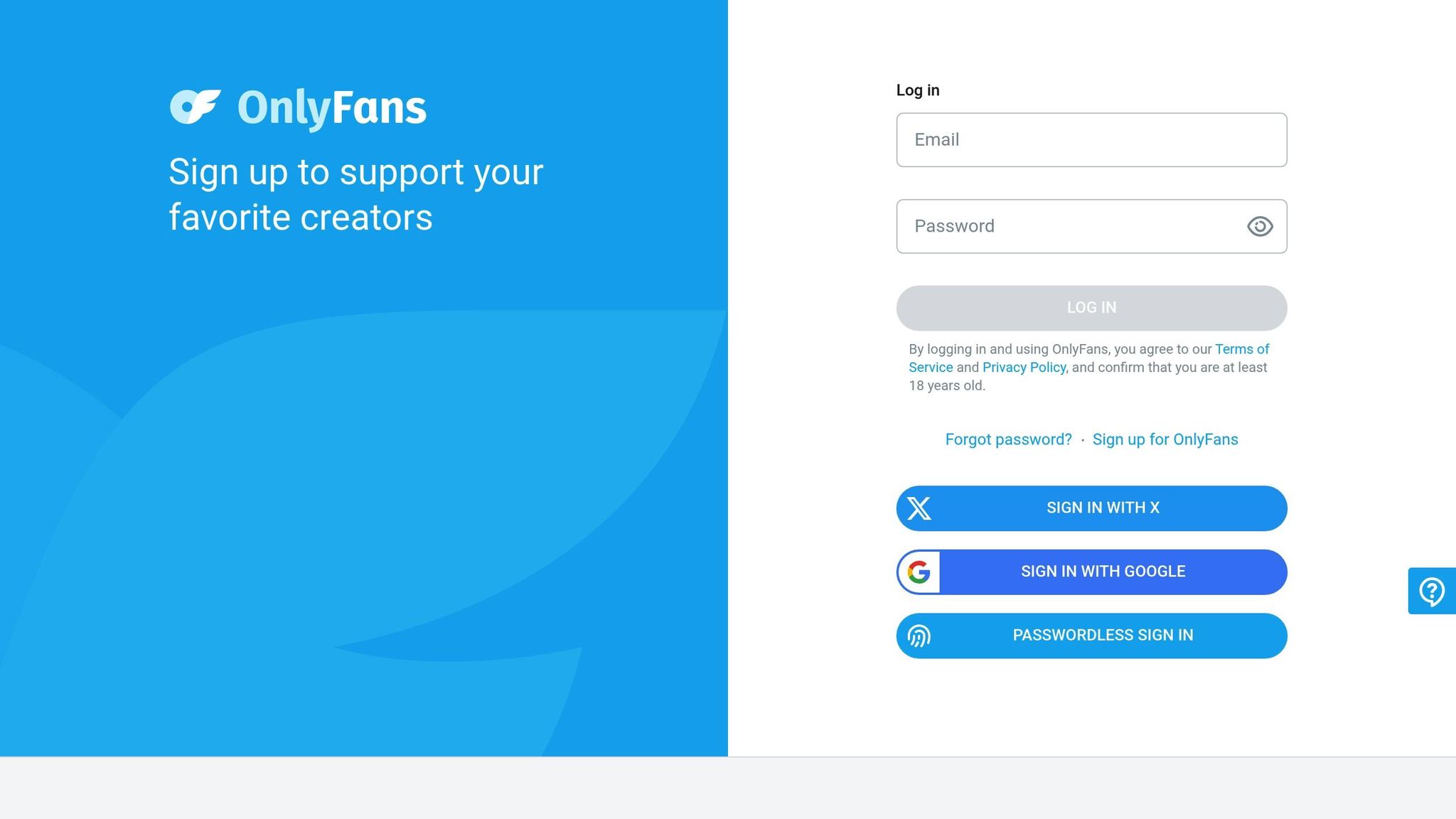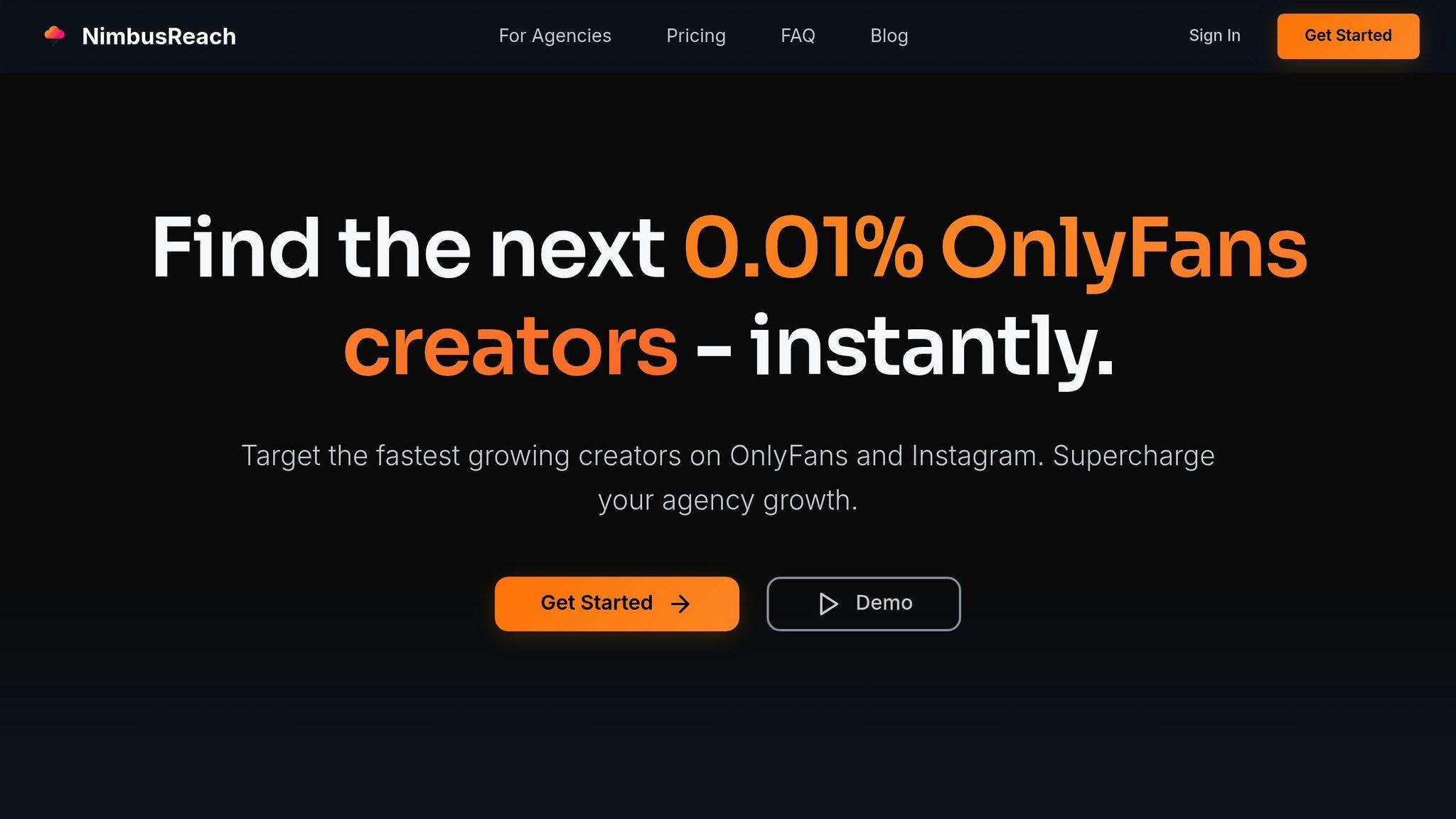Clear contracts are non-negotiable when working with creators. Without them, you risk disputes over payment, content ownership, or deliverables. A strong agreement ensures both parties understand their roles, expectations, and protections upfront. Here’s what you need to focus on:
- Define Roles & Scope: Clearly identify all parties (legal names, business entities) and outline the work expected, including content deliverables, marketing duties, and performance metrics.
- Payment Terms: Specify the payment model (flat fee, commission, hybrid), schedule, and methods. Include details for expense deductions and additional fees.
- Content Ownership: State who owns the content, how it can be used, and any exclusivity terms. Address rights for editing, geographic restrictions, and usage duration.
- Contract Duration & Termination: Set a timeline for the agreement, renewal terms, and conditions for ending the contract, including final payments and content handling.
- Legal Protections: Include confidentiality clauses, compliance with tax laws (e.g., 1099 forms), and governing law for dispute resolution.
How to Create an OnlyFans Management Contract [Templates Available]

Defining Parties and Scope of Work
To avoid misunderstandings or disputes down the line, it’s essential to clearly define the roles of everyone involved and outline the scope of work in detail. A well-structured creator contract starts with identifying all parties and specifying exactly what work is expected.
Documenting Who Is Involved
Begin by listing the full legal names of all parties, along with any business entities (like LLCs or sole proprietorships) they operate under. Avoid relying solely on social media usernames – these can change or be unclear. For example, include both the creator’s legal name and their platform handles to ensure clarity, such as:
"Creator operates under the following verified accounts: @BellaRodriguez on OnlyFans, @SexyBella_Official on Twitter, and @BellaR_Content on Instagram."
Additionally, make sure to include updated contact information for legal notices, such as phone numbers, email addresses, and physical addresses. Professional email addresses are often preferred, as they help maintain boundaries between personal and business communications.
If an agency or management company is involved, provide their business details too. This includes the business license number, tax ID, and registered address. These details are crucial in case of legal disputes or if formal notices need to be served.
Once all parties are clearly identified, the next step is to outline the services and deliverables in detail.
Outlining the Services to Be Provided
Be precise about the deliverables. For instance, specify if the creator is expected to produce 15 photos and 3 videos per week, or if custom content is part of the agreement. Vague descriptions can lead to confusion, so it’s better to be explicit.
Marketing and promotional responsibilities should also be detailed. For example, the agency might handle tasks like scheduling social media posts, responding to direct messages within two hours during business hours, or managing ad campaigns. Meanwhile, the creator could be responsible for live streaming, creating custom content, and maintaining their physical appearance as part of their brand.
Revenue-related activities should be broken down as well. Clarify whether the creator is expected to engage in pay-per-view messaging, sell custom content, participate in cam shows, or focus solely on subscription-based income. Each revenue stream might come with its own set of expectations and commission structures.
Set clear response time expectations for communication, such as replying within four hours on weekdays or eight hours on weekends. Also, agree on preferred communication channels to handle urgent matters effectively.
It’s important to include measurable performance metrics. Instead of vague goals like “good engagement,” specify targets such as maintaining at least 50 likes per post or responding to 90% of subscriber messages within 24 hours. These concrete expectations make it easier to assess performance objectively.
Once the scope of work is defined, the next step is to set clear terms for the contract’s duration and renewal process.
Setting Contract Length and Renewal Terms
Creator contracts typically run for 3 to 12 months. Shorter terms allow both parties to test the partnership without a long commitment, while longer terms provide stability for planning. A 6-month term with renewal options often strikes the right balance.
Including automatic renewal clauses can simplify the process but should allow for opt-out periods. For example:
"This agreement will automatically renew for an additional 6-month period unless either party provides 30 days written notice prior to the renewal date."
This gives both parties time to evaluate the partnership and decide whether to continue.
Termination terms should be fair and specific. Define conditions for termination with cause, such as breach of contract, illegal activity, or failure to meet agreed-upon standards. Also, include terms for termination without cause, allowing either party to end the agreement with proper notice, typically 30 days. Be sure to outline what happens with final payments and content rights during this process.
Trial periods can be useful for new partnerships. A 30 to 60-day trial period allows both sides to assess compatibility, with the option to terminate the agreement on shorter notice during this time.
Include a timeline for renewal negotiations. For example, specify that discussions about renewing the contract, adjusting rates, or modifying terms should begin 60 days before the current contract ends. This ensures both parties have enough time to renegotiate or explore other opportunities.
Lastly, clearly define exit procedures to avoid conflicts. Outline how content will be managed, when final payments are due, and what happens to social media accounts or promotional materials after the contract ends. Also, specify whether there are any ongoing obligations or restrictions post-contract. These details help ensure a smooth transition for everyone involved.
Payment Structures and Compensation Terms
Well-defined payment terms are the backbone of successful partnerships with creators. They help prevent misunderstandings and disputes, ensuring everyone is on the same page about how and when payments will be made. It’s essential to document every detail to keep things smooth and professional.
Choosing a Payment Model
The right payment model depends on the partnership’s goals and the creator’s preferences. Here are some common options:
- Commission-based models: These link earnings to performance, which can motivate creators but might lead to fluctuating income.
- Flat fees: This approach offers predictable income, making budgeting easier for creators. However, it can be risky for businesses if performance doesn’t meet expectations.
- Hybrid models: A mix of base pay and performance incentives, hybrids balance income stability with the potential for higher rewards.
Other options include revenue-sharing agreements or performance-based bonuses. These models can allocate earnings from various streams like subscriptions, tips, or custom content sales, while also rewarding exceptional results.
Once you’ve settled on a model, it’s time to define the timing and methods for payments.
Setting Payment Terms and Schedules
Establishing a clear payment schedule is key. Decide on a regular cycle – weekly, bi-weekly, or monthly – and make sure to account for processing times when setting payment dates.
For payment methods, consider options like direct deposit, digital wallets, or international transfer services for USD transactions. To avoid frequent small payments, set a minimum payment threshold.
If there are any expense deductions, such as fees for agency services, platform charges, or payment processing, make sure these are clearly documented. Providing regular statements that detail gross earnings, deductions, and net payments can help avoid confusion, simplify tax reporting, and resolve disputes quickly.
As the partnership evolves, you’ll also need a plan for handling any additional fees or adjustments.
Handling Additional Fees and Changes
Scope changes and unexpected expenses are inevitable, so it’s smart to include provisions for these scenarios. Clearly outline how extra fees or rate adjustments will be handled. Document all billable changes and provide timelines for resolving disputes to keep things transparent and fair.
Content Ownership, Intellectual Property, and Exclusivity
Once you’ve nailed down the scope of work and payment terms, it’s time to tackle intellectual property and exclusivity. This step is essential to protect creative integrity while safeguarding business interests. Clearly defining content ownership and usage rights can prevent misunderstandings and avoid potential legal headaches.
Setting Content Ownership and Usage Rights
A well-drafted contract should specify that creators retain ownership of their intellectual property while granting the necessary usage rights to agencies or business partners. This approach respects the creator’s work while ensuring businesses can use the content effectively for their marketing needs.
It’s crucial to define these usage rights with clear boundaries. For instance, an agency might have permission to use the content on social media, websites, or other promotional materials, but not for resale or licensing to third parties. The contract should also outline whether these rights expire after a specific period or continue beyond the partnership.
Another key detail is derivative works. If the content will be edited, remixed, or integrated into other projects, the contract should require the creator’s explicit approval beforehand.
Additionally, geographic restrictions on usage rights can help ensure clarity. Specify whether the rights apply globally or are limited to certain regions, and clarify if they extend beyond the contract’s duration.
Once content rights are squared away, it’s time to think about how exclusivity clauses might shape the partnership.
Including Exclusivity Clauses
Exclusivity clauses can significantly affect a creator’s earning potential, so they must be balanced with fair compensation. These clauses should clearly state whether the creator is required to work exclusively with your agency or if they are restricted from collaborating with competitors.
The scope of exclusivity can vary. Some agreements limit creators from working with direct competitors, while others impose broader restrictions on all commercial partnerships during the contract term. A more flexible option is geographic exclusivity, which allows creators to work with different partners in separate regions.
When exclusivity limits a creator’s opportunities, compensation should reflect this restriction. Consider offering bonuses or higher commission rates to account for the creator’s opportunity cost.
For added flexibility, time-limited exclusivity clauses can act as a trial period, giving both parties a chance to evaluate the partnership before committing to longer-term restrictions. Similarly, non-compete clauses that take effect after the contract ends should have reasonable timeframes and geographic limits.
Setting Deliverables and Performance Expectations
To tie content ownership and exclusivity together, the contract should also define deliverables and performance expectations. Set clear quality standards, revision policies, and approval processes to ensure the final product meets business needs.
Performance metrics, such as engagement rates or follower growth, can help measure success. However, it’s important to keep these benchmarks realistic and acknowledge that external factors might influence outcomes.
Quality standards should be detailed, covering technical aspects like image resolution, video length, or adherence to brand guidelines. A streamlined approval process can help maintain quality control without causing unnecessary delays.
Finally, include reasonable revision limits and force majeure clauses to address unforeseen disruptions. This approach helps ensure the partnership runs smoothly while protecting both parties from unexpected challenges.
sbb-itb-bd3d2dc
Confidentiality, Compliance, and Legal Considerations
When crafting contracts for creator partnerships, it’s essential to build a solid legal framework that protects both parties and ensures adherence to relevant regulations. These elements not only safeguard the relationship but also provide clear pathways to resolve disputes if they arise.
Protecting Confidential Information
Creator partnerships often involve the exchange of sensitive information, ranging from marketing plans and financial data to proprietary tools and client lists. To protect this information, every contract should include a non-disclosure agreement (NDA) clause.
The NDA should clearly define what constitutes confidential information. This may include business strategies, customer data, software, and any non-public details shared during the collaboration. The definition should strike a balance – specific enough to avoid ambiguity but broad enough to account for unexpected situations.
In creator relationships, mutual confidentiality is key. While agencies need to protect their business secrets, creators also share personal insights, content strategies, and audience data that require safeguarding. A clause that binds both parties equally fosters trust and respect.
Confidentiality obligations often extend beyond the partnership itself. Most agreements specify a duration – typically two to five years after the contract ends – though some sensitive information, like trade secrets, may warrant indefinite protection. The contract should also clarify what happens to confidential materials post-partnership. For example, should they be destroyed, returned, or retained under continued confidentiality terms? Explicitly address digital files, screenshots, and other media to avoid loopholes.
Meeting Legal and Tax Requirements
Contracts must comply with federal and state laws, especially regarding independent contractor classification and tax reporting. Misclassifying creators can result in penalties and financial repercussions.
For tax purposes, the IRS 1099 requirements are crucial. Any creator earning $600 or more in a calendar year must receive a Form 1099-NEC by January 31st of the following year. The contract should clarify that creators are responsible for their own taxes and explicitly state their role as independent contractors, not employees.
Another critical compliance area is age verification, particularly for platforms involving adult content. Contracts should require creators to provide valid government-issued ID confirming they are at least 18 years old. This documentation must be collected and securely stored before any work begins.
State-specific laws, like California’s AB 5, may impose additional requirements for contractor classification. Similarly, data privacy laws such as the California Consumer Privacy Act (CCPA) may apply if personal data from audiences is collected or processed. Contracts should outline data handling responsibilities to ensure both parties understand their obligations.
For international creators, tax treatment can vary based on their location and citizenship. Contracts should address these complexities by including provisions for appropriate tax withholding and reporting procedures.
Including Governing Law and Signature Requirements
Once confidentiality and compliance are addressed, the contract should establish a framework for enforcement. A governing law clause is essential, as it determines which state’s laws will apply in case of disputes. The choice of jurisdiction can significantly influence how terms are interpreted and what remedies are available.
States like Delaware and New York are popular choices due to their well-established legal precedents for commercial agreements. Alternatively, the governing law might align with the state where the business operates or where the bulk of the partnership activities occur.
Digital signatures are now standard, but the contract should specify acceptable platforms for electronic signing (e.g., DocuSign or Adobe Sign). It’s also wise to include backup methods, such as wet signatures or faxed copies, in case of technical issues.
The governing law section should also address dispute resolution. Specify whether disputes will be resolved through litigation, arbitration, or mediation. Arbitration clauses can help reduce costs and keep disputes private, though they may limit rights like jury trials or class actions. Additionally, include a force majeure clause to account for unforeseen events and a severability clause to ensure the rest of the contract remains enforceable even if one provision is invalidated.
Using NimbusReach for Contract Clarity and Performance Tracking

When it comes to fine-tuning contracts and keeping tabs on performance, NimbusReach provides agencies with the tools they need to make smarter, data-driven decisions. By reducing the guesswork in creator partnerships, it helps ensure better outcomes for both agencies and creators.
Using NimbusReach for Creator Vetting
NimbusReach’s analytics and its Fan Devotion Score offer a clear, data-backed way to evaluate creators. This score takes into account engagement rates, audience loyalty, and content performance across platforms, giving agencies a reliable benchmark for assessing a creator’s impact.
For example, if a creator’s Fan Devotion Score shows consistently high engagement, agencies can use this information to set minimum engagement thresholds in contracts. This ensures that expectations are grounded in reality, protecting both parties from unrealistic assumptions.
NimbusReach also provides insights into audience demographics and growth trends, which can guide decisions about target markets and expansion goals. Want to align a creator’s audience with a client’s needs? These analytics make it easier to structure compensation and performance expectations that reflect real-world data. Ultimately, this level of vetting informs key contract terms and helps set the stage for measurable success.
Adding Performance Metrics with NimbusReach Insights
NimbusReach doesn’t just help with vetting – it also makes tracking performance a breeze. The platform monitors key metrics like audience growth, engagement rates, content frequency, and revenue generation. These metrics can be directly incorporated into contracts, creating clear, measurable performance indicators.
By using data to set expectations, agencies can reduce disputes and improve ROI. For instance, if a creator has historically maintained a strong engagement rate, a contract might require them to sustain that rate or achieve a specific audience growth target – say, a 10% subscriber increase over six months.
NimbusReach’s automated alerts are another game-changer. If a creator exceeds or falls short of agreed-upon metrics, the platform flags it in real time. This allows agencies to address issues immediately rather than waiting until the end of the contract period. Clear benchmarks like these naturally flow into better content planning and smoother partnerships.
| Metric Type | Contract Usage | NimbusReach Tracking |
|---|---|---|
| Engagement Rate | Minimum performance thresholds | Real-time monitoring with alerts |
| Audience Growth | Monthly/quarterly targets | Automated growth tracking |
| Content Output | Delivery schedules and frequency | Content calendar integration |
| Revenue Performance | Commission structures and bonuses | Revenue analytics and reporting |
Planning Content and Deliverables
A well-structured content plan can prevent many contract disputes before they even arise. NimbusReach’s content ideation tool helps agencies and creators collaborate on clear production schedules, ensuring everyone is on the same page.
Instead of vague terms like “regular content creation,” agencies can use the platform to develop specific calendars and deadlines. This transparency not only sets expectations but also respects the creator’s workflow. By analyzing when creators typically post and which types of content perform best, agencies can develop delivery schedules that maximize impact.
NimbusReach also enables performance-based contract adjustments. If certain types of content consistently outperform others, agencies can revise contracts to focus on those high-impact deliverables. This flexibility benefits both parties, leading to better results and fairer compensation. With its combination of performance data and planning tools, NimbusReach ensures contracts are both precise and adaptable to changing needs.
Conclusion: Building Strong Creator Partnerships with Clear Contracts
Thriving in the creator economy means forming partnerships built on trust, transparency, and well-defined agreements. While the fast-paced nature of this space can be overwhelming, taking the time to craft clear contracts upfront helps avoid disputes and creates a solid foundation for lasting, profitable relationships.
Key Elements of a Strong Contract
A well-structured contract should cover the essentials, leaving no room for ambiguity. Here’s what to include:
- Clear Identification of Parties: Specify who’s involved – whether it’s the creator, agency, or any third parties.
- Defined Deliverables: Be explicit about expectations, such as content frequency, engagement goals, or any other measurable outcomes.
- Payment Terms: Outline payment structures, whether it’s a flat fee, commission, or a hybrid model, and include payment schedules.
- Content Ownership and Exclusivity: Address intellectual property rights, often allowing creators to retain copyright while granting agencies limited usage rights. Exclusivity clauses should clarify if creators can collaborate with other agencies.
- Legal Requirements: For U.S.-based agreements, include elements like age verification, 1099 tax obligations, and confidentiality clauses.
Ownership and intellectual property are particularly important. Many contracts favor creators, allowing them to maintain control over their work while granting agencies promotional rights. Meanwhile, exclusivity clauses protect your investment by defining whether a creator can work with competitors.
Why Transparency and Flexibility Matter
Beyond the basics, fairness and open communication make partnerships stronger. Transparent terms and consistent dialogue foster trust, reduce disputes, and improve creator retention. Treat contracts as living documents – adjusting terms like performance bonuses or renegotiating based on measurable success ensures both parties feel valued.
Agencies that embrace this approach view contracts as collaborative tools, not rigid rules. By offering incentives tied to performance or revisiting terms during regular reviews, you show creators that the partnership is mutually beneficial.
Ultimately, a clear and flexible contract eliminates confusion, allowing creators to focus on what they do best – creating content – while agencies can confidently invest in growth strategies. With tools like NimbusReach, both sides can measure success, adapt agreements, and focus on long-term innovation.
FAQs
What mistakes should I avoid when creating contracts with creators?
When working on contracts with creators, there are a few common missteps that can lead to unnecessary disputes or confusion. One major issue is not clearly outlining content ownership and usage rights. Without clarity, misunderstandings about intellectual property can easily arise. Another frequent oversight is neglecting to define payment terms – details like how much, when, and in what manner creators will be paid should be explicitly stated. Additionally, skipping over crucial elements like performance expectations or exclusivity agreements can leave too much room for interpretation, potentially straining the professional relationship.
To sidestep these problems, make sure your contracts are thorough, straightforward, and fair to all parties involved. Investing time in addressing these key points not only protects your business but also fosters trust and collaboration with creators.
How can I make sure intellectual property rights are clear and protected in a creator contract?
To safeguard intellectual property rights in a creator contract, it’s essential to outline ownership, licensing, and usage rights with precision. Clearly state whether the rights are being transferred or licensed, define the permitted uses, and note any restrictions or limitations. Don’t forget to address specifics like attribution requirements, the duration of the rights, and any geographical boundaries.
These details help avoid confusion and minimize the risk of disputes later on. To ensure the agreement complies with copyright laws and protects everyone involved, it’s a smart move to consult a legal professional when drafting the contract.
What should you consider when creating fair exclusivity clauses in contracts with creators?
When creating exclusivity clauses, it’s important to outline specific terms that set clear expectations. Make sure to define the timeframe for exclusivity, the geographic region it applies to, and the content types included. This helps prevent overly restrictive conditions that might hinder a creator’s future opportunities.
To keep things equitable, think about providing compensation or perks linked to the exclusivity agreement. This not only incentivizes creators but also helps build a fair and collaborative partnership. Adding review periods and clearly stated termination terms provides flexibility for both sides, making it easier to adapt if circumstances change and fostering a sense of trust and ongoing cooperation.





